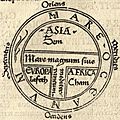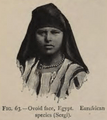Hamitic facts for kids
The Hamitic theory was an old idea that claimed some groups of people in Africa, called "Hamites," were better or more advanced than other groups, often called "Negroid races." This theory was started by a man named John Hanning Speke.
Later, two other people, Karl Richard Lepsius and Carl Meinhof, added to this theory. They tried to sort people into "Hamitic" or "non-Hamitic" groups based on their languages or their family backgrounds. However, scientists and historians today know that these ways of classifying people were wrong and are no longer used.
This theory suggested that people with European ancestry were somehow closer to "Hamites" than people whose families had always lived in Africa. What's interesting is that the theory even included some of the darkest-skinned groups in Africa, like the Nilotes, as "Hamitic." This shows how confusing and unscientific the theory was.
How the Theory Caused Problems
The Hamitic theory became very harmful, especially during the time when European countries colonized Africa. It was used to create different classes among African people. Some groups were seen as more "Hamitic" and therefore more "civilized" or fit to rule, while others were seen as less so.
This idea contributed to terrible events, like the Rwandan Genocide. In Rwanda, the theory was used to make the Tutsi people seem different and superior to the Hutu people. Even though the differences between these two groups were small, the Hamitic theory helped to increase tension and led to a terrible conflict.
Today, the Hamitic theory is seen as a false and harmful idea. It was based on racist beliefs and has been completely rejected by modern science and history.
Images for kids
-
Geographic identifications of Flavius Josephus, c. 100 AD; Japheth's sons shown in red, Ham's sons in blue, Shem's sons in green.
-
This T and O map, from the first printed version of Isidore's Etymologiae, identifies the three known continents as populated by descendants of Sem (Shem), Iafeth (Japheth) and Cham (Ham).
-
Languages of pastoralist Bedouins such as the Beja were the model for the conflation of ethnic and linguistic evidence in the construction of Hamitic identity.
-
Egyptian woman with ovoid facial profile, from Giuseppe Sergi's The Mediterranean Race (1901).
See also
 In Spanish: Lenguas camito-semíticas para niños
In Spanish: Lenguas camito-semíticas para niños






